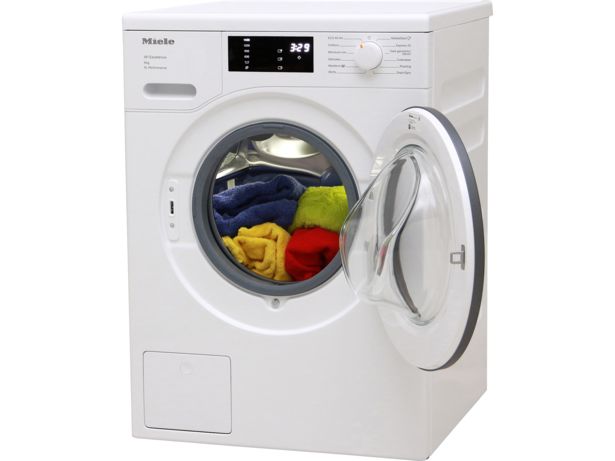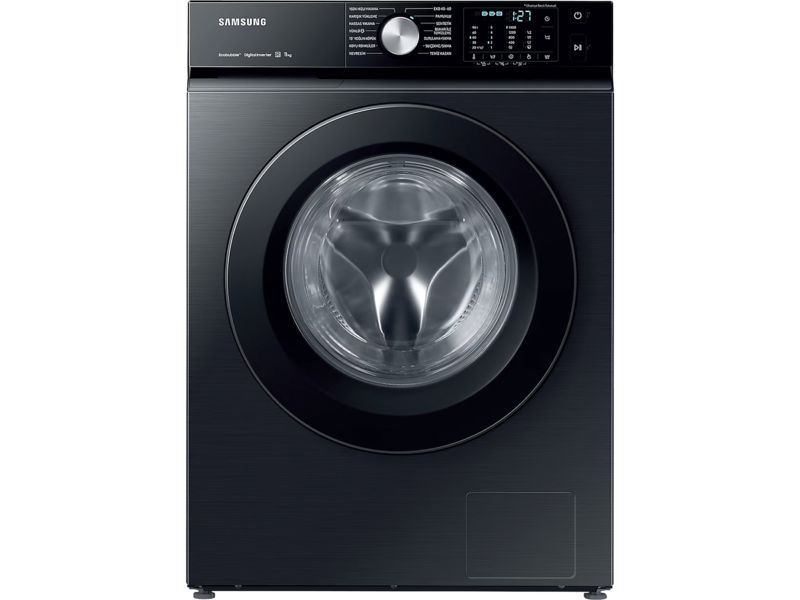
By clicking a retailer link you consent to third-party cookies that track your onward journey. If you make a purchase, Which? will receive an affiliate commission, which supports our mission to be the UK's consumer champion.
5 laundry habits to stop immediately

If your whites are not so bright, your darks and colours look dull, or your clothes are wearing out too soon, it could be the way you're washing and drying your clothes.
Even our Best Buy washing machines won't be able to repair the damage caused by using the incorrect detergent or washing program.
Read on to find out five common laundry mistakes you may be making, and what you can do instead to keep your clothes looking better for longer.
Be inspired to make home improvements. Sign up for our Home newsletter – it's free monthly
1. Using the same detergent for all clothes

Did you know that most washing powders, even the ones made for colours, often contain bleaching agents? This means it's best to use them just for white washes, as repeated use could make your darker items fade to grey.
Liquid detergents (liquids, gels or capsules) are a much better choice for darks and bright colours as they don't use the same bleaching agent, helping your more colourful outfits maintain their vibrancy for longer.
It's always worth having a wool or delicates detergent stashed in your laundry cupboard too, as these have a more neutral pH level that's gentler on delicate items.
It's also a good idea to avoid using too much detergent. On darker clothes, evidence of overdosing can show up as either flecks of detergent powder or translucent smears of liquid detergent. It could also be a problem if your skin is sensitive to any of the chemicals used in the detergent.
Find out how much detergent you should be using.
Read our washing powder and laundry detergent reviews to find the best for blitzing tough stains and the ones that are best avoided
2. Over or under-washing

Nobody wants a reputation for not washing their clothes enough, but there's a nice middle ground between chucking things in your laundry basket after every wear and leaving it so long they can stand up on their own.
As long as you haven't been doing any particularly messy or strenuous activities, you should be able to follow these guidelines:
- Underwear: 1 wear
- Bra: 2-3 wears
- T-shirt: 1-2 wears
- Whites: 1-2 wears
- Jeans: 6-10 wears
- Sweatshirt: 5-6 wears
- Dress: 1-3 wears
- Skirt: 5-7 wears.
Check out our guide to washing clothes for the full list, but if all else fails a simple 'sniff test' should keep you on the right track.
Washing your clothes less often does have many perks though, including keeping them in better condition for longer and helping you to save energy and water by doing fewer washes each week.
Visit our shortlist of the best washing machines and check out our round up of the best washing machine deals
3. Washing everything at the same temperature

Although we've discovered that most Which? members wash their clothes at 40°C, it's a very good idea to adjust the temperature of each cycle based on the items going into your washing machine.
For lightly soiled clothes, a cool wash (30°C or even 20°C) will likely do the trick. A Which? investigation into laundry habits found that a 30°C wash uses 38% less energy than a 40°C one, and a 20°C wash will cut energy use by a whopping 62% – so it's better for the planet as well as your pocket.
For bedding, towels, and clothes with lots of tough stains, you'll probably want a hotter cycle – hot water is effective at killing off bacteria and germs and does a much better job of removing stubborn, baked-in dirt.
For more guidelines, including what temperatures you should wash underwear, bed sheets and baby clothes at, consult our washing machine temperatures guide.
Interested in eco-friendly detergents? We've scrutinised the sustainability details of Bio-D, Ecover, Method, Smol and more green brands
4. Putting up with a smelly washing machine

There's no denying that mould build-up in washing machines is almost inevitable, but it doesn't look the best and it will make your clothes smell – so you're better off getting rid of it.
To eradicate mould and protect your outfits from mildew, run a regular, hot service wash every few months (ideally with washing machine cleaner). Some models even offer a specific drum-cleaning cycle and will prompt you when it's time to run it.
You should also wash the detergent drawer – in most cases you can completely remove it to wash it in the sink – and clean out the lint filter behind the latch underneath the door.
To help you keep on top of maintenance, it's a good idea to leave your washing machine door and drawer open after washes to let humidity escape and prevent mould buildup.
For more info, watch our full step-by-step video guide on how to clean a smelly washing machine.
Any other issues with your washing machine? We run through common washing machine problems and how to fix them
5. Throwing everything into the tumble dryer

Throwing everything from your washing machine directly into the tumble dryer isn't always the best approach to drying your clothes.
If you don't have any space to hang items inside, or the weather is too bad for outdoor drying, make sure you fill your dryer to its stated capacity and separate cottons from synthetics as they dry at different speeds.
You should also regularly clean the lint filter and heat exchanger to ensure your dryer is working as efficiently as possible. Take a look at our tumble dryer reviews to get your hands on one of the best models too.
Here's a list of clothes that are best left out of the dryer to avoid heat damage:
- Bras: the heat could bend them out of shape.
- Jeans: they can shrink in hot temperatures.
- Swimming costumes: the Lycra in them can distort and break.
- Tights: the delicate material can tear.
- Embellished clothes: sequins could put tiny rips into other clothes, and stones or beads can melt.
- Shoes and trainers: the glue that attaches the sole to the rest of the shoe will melt in high temperatures
You'll get the best results if you hang your clothes up to dry. If you're drying indoors, make sure it's in a well-ventilated, sunny room with a window open, to avoid the growth of mould.
We've tested heated clothes airers and can tell you how well they work and how much they'll cost you to run.
Dehumidifiers can also be useful to help dry clothes, but keep the window closed if you're using one, otherwise it will have to work twice as hard. Take a look at our dehumidifier reviews to find out which performed best in our tests.
Don't put any wet garments on radiators as this releases moisture into the air causing mould, and it will act as a barrier that prevents your home from heating up.
Take a look at our tumble dryer tips and maintenance for more drying advice
Which? has tested and researched washing machines and tumble dryers for decades. We've also tested washer-dryers, different types of laundry detergent and steam irons.
More recently we've tested and revealed the best heated clothes airers and best clothes steamers.
So we're a trusted source if you want to know how to keep your clothes clean and looking good for as long as possible.
Take a look at our reviews and advice to help you buy the right product and use it to the best of its abilities.




